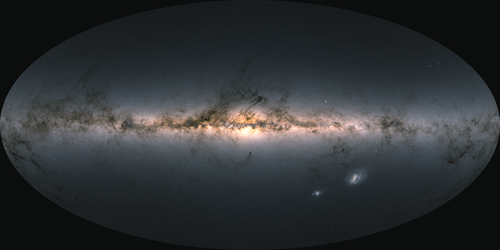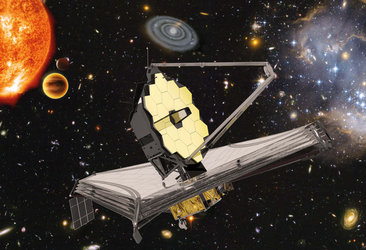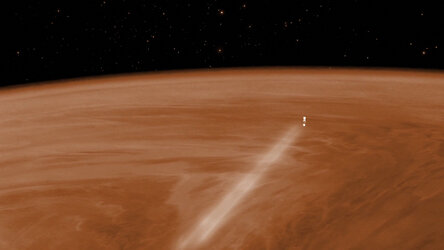Eddington factsheet
Searching for habitable planets and mapping stellar interiors
Name Many of the ideas behind Eddington originated before the coming of the Space Age with the physicist Arthur Stanley Eddington.
Description Eddington will be a space telescope designed to detect subtle changes in the light from stars. It will spot oscillations that show the star’s interior condition. It will also find planets half the size of Earth and upwards, within the star’s habitable zone, as they cross the face of the star.
Launch 2008 (Soyuz-Fregat rocket).
Status Cancelled.
Journey After leaving Earth, Eddington will travel beyond the Moon to a special orbit called the second Lagrangian point (known as L2). Here it will begin its five-year mission.
Notes Eddington carries a precision photometer, that is, a device that will measure small changes in the brightness of a celestial object. These changes in brightness may well be due to the passing of planets in front of a star.
Eddington will be so sensitive that if, for example, it were to observe a swarm of 10 000 fireflies, it would notice if just one of them `turned off'.
Asteroseismology is the study of stellar oscillations in stars like our Sun (that is, the study of starquakes). Eddington will be the culmination of an international attempt to perform asteroseismology from space. Two small precursor space missions, MOST and Corot, are planned to lead the way.
By looking at stars of similar mass to the Sun but of different ages, Eddington will allow astronomers to check their theories about how the Sun has changed since its birth and how it will evolve in the future.
Eddington will help solve a problem called the Faint Sun Paradox. Astronomers expect that the Sun was about 30% fainter when it was born. However, geological records show that Earth's climate has remained more or less stable throughout its history. Either the solar models are wrong or our climate is remarkably resistant to change.















 Germany
Germany
 Austria
Austria
 Belgium
Belgium
 Denmark
Denmark
 Spain
Spain
 Estonia
Estonia
 Finland
Finland
 France
France
 Greece
Greece
 Hungary
Hungary
 Ireland
Ireland
 Italy
Italy
 Luxembourg
Luxembourg
 Norway
Norway
 The Netherlands
The Netherlands
 Poland
Poland
 Portugal
Portugal
 Czechia
Czechia
 Romania
Romania
 United Kingdom
United Kingdom
 Slovenia
Slovenia
 Sweden
Sweden
 Switzerland
Switzerland





























